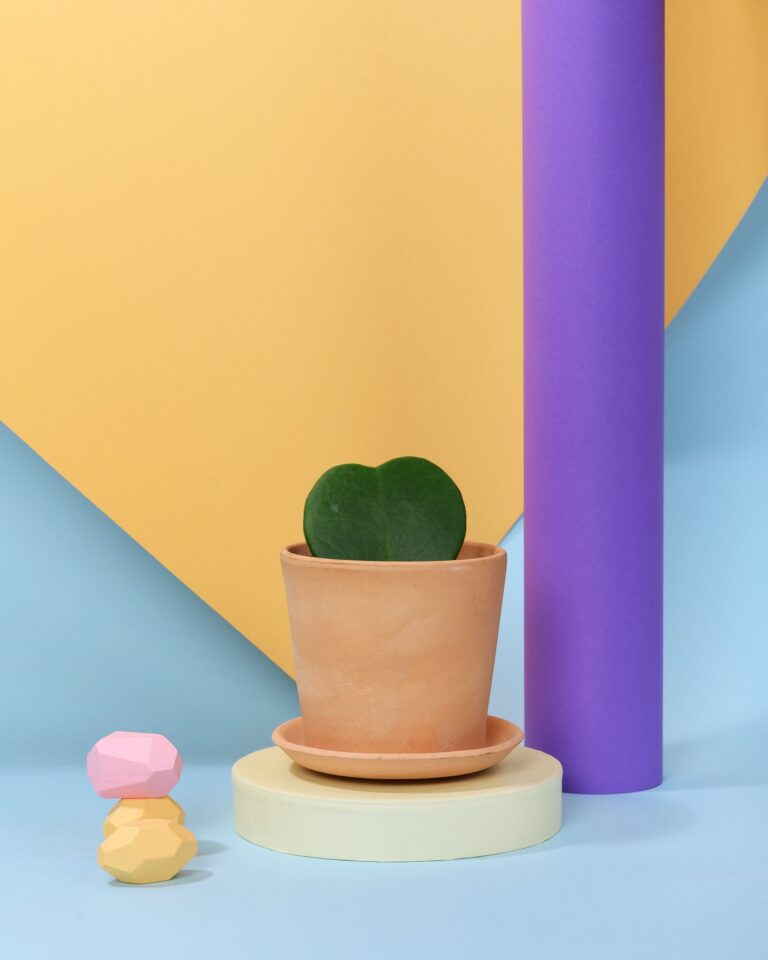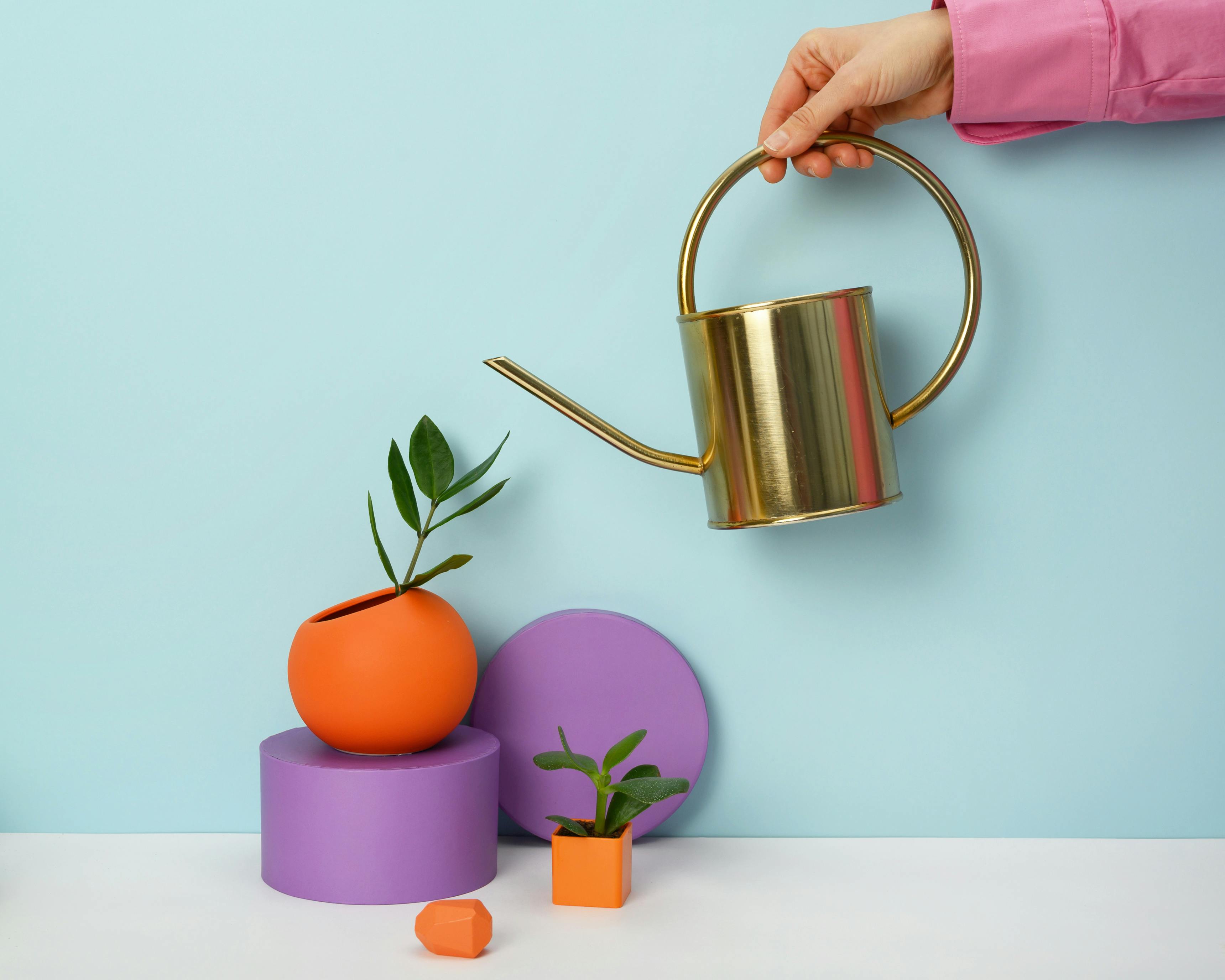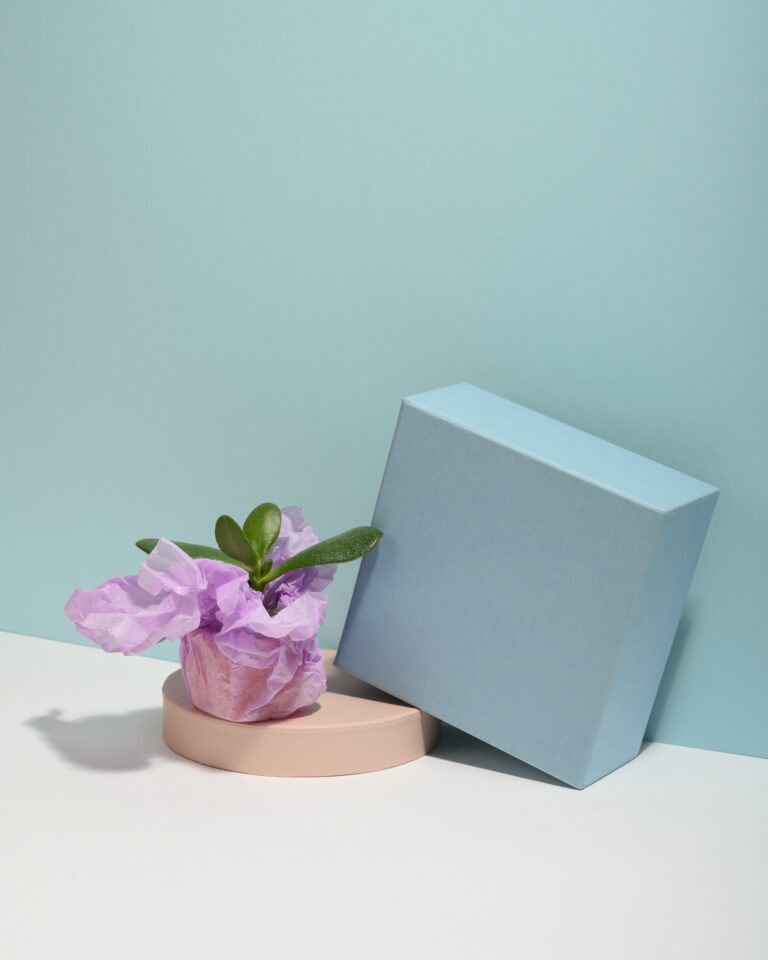Introduction to Crassula Obliqua
Welcome to the world of Crassula obliqua, a fascinating succulent that’s capturing the hearts of indoor gardening enthusiasts everywhere! This plucky little plant hails from the rocky hillsides of South Africa, but don’t let its exotic origins fool you; it’s as comfortable on a sunny windowsill as it is in the great outdoors. Often mistaken for its close cousin the jade plant, Crassula obliqua has a charm all of its own.

Whether you’re a seasoned botanist or just starting your plant-parent journey, Crassula obliqua offers versatility that suits any green space. Think of it as the perfect sidekick to your aesthetic adventures, thriving with minimal fuss and turning heads with its symmetrical leaf arrangement. Imagine walking into a room, the air clean and fresh, as your gaze lands upon this green gem, quietly showcasing the effortless beauty of nature.
Crassula obliqua isn’t just a pretty face in the plant world; it’s a symbol of modern indoor gardens. It represents a movement of eco-conscious decor, where vibrant greenery breathes new life into urban spaces. For more insights on the ever-expanding universe of succulents, check out our guide to indoor succulent plants. Join the ranks of Crassula obliqua enthusiasts and transform your living space into a green sanctuary!
Physical Description and Varieties
Stepping into the world of the Crassula obliqua, you’re met with a succulent that is as versatile as it is charming. Stick around as we delve into the rich tapestry of textures and colors that make up this remarkable plant. Whether you’re a green thumb or a curious newbie, there’s something truly captivating about the way Crassula obliqua presents itself.
At first glance, you’ll notice the succulent’s fleshy leaves, which are arranged in a symmetrical pattern that’s satisfying to the eye. These robust leaves are not just about form; they’re also factories of life, storing water for the dry spells – a true testament to the resilience of Crassula obliqua. Picture the leaves with a tinge of pink blush along their margins when graced by the sun, a sight that’s a feast for the senses.
It’s not just about the looks, though. What strikes most enthusiasts are the sheer variety of forms this succulent can take. From the classic, streamlined silhouette of the straight species to the more curious varieties like the ‘Tricolor’ with its painterly blend of greens, yellows, and reds, each variety has its own character. For a touch of drama, the ‘Calico Kitten’ variety adds a cascade of heart-shaped leaves, each one like a splash of watercolor against the canvas of your garden or windowsill.
Let’s not forget its growth habits, which are quite a spectacle in themselves. Left to their own devices in a cozy nook of your living space or out in a rock garden, these succulents will spread their reach horizontally before sending out sprightly vertical shoots. It’s this unpredictable yet structured growth pattern that sets our green companion apart, making it a stellar candidate for both container gardens and miniature landscapes alike.
Imagine walking into a friend’s house only to be greeted by a miniature forest of Crassula obliqua, each plant a different variety but all part of the same story. It’s a true conversation starter and a testament to the endless variety this species provides. Whether you’re drawn to the compact, space-saving forms or the larger, more statement-making varieties, there’s a Crassula obliqua waiting to enhance your green space.
Ideal Growing Conditions
So, you’ve adopted a Crassula obliqua – splendid choice! This succulent is not only charming but also remarkably resilient, making it a gem in any green collection. Let’s dive into creating the perfect haven for your leafy friend. Imagine a day in the life of a My keyword: basking in the glow of the sun on a coastal cliff in its native habitat. That’s the SECRET to replicating conditions at home.
Firstly, lighting is like the elixir of life for these green buddies. A bright spot, with some direct sunlight, is their ideal haunt – think sunny windowsill or a cosy corner with that golden hour touch. But remember, just like us, they need to avoid scorching summer midday rays – a little shade during peak hours keeps them from sunbathing woes.
Now, for temperature, think of a mild spring day, consistently pleasant. These succulents relish temperatures between 60-75°F (15-24°C). Of course, they can endure a bit cooler or warmer but keep them away from dramatic temperature swings – they’re not fans of surprise weather parties.
Humidity, on the other hand, needs a Goldilocks approach – not too damp, not too dry. A moderate humidity mimics their natural coastal cliffs, far from the rainforest vibes or desert droughts. Keep air circulation in check; these plants enjoy a gentle breeze, like whispers of air, leading to their healthy, plump posture.
Wondering how to water your Crassula obliqua? Click here for a dose of insight on that crucial step to keep those succulent leaves full and happy.
If you’re looking to expand your knowledge or bring more succulent friends home, do consider reading our comprehensive guide on Crassula Alba as well!

Planting and Repotting Essentials
Every gardener dreams of a verdant living space thronged with flourishing plants, and the Crassula obliqua can be a jewel in that green crown. But to keep this succulent thriving, understanding the planting and repotting intricacies is crucial. So, let’s dig in and get our hands dirty with some practical advice for giving your plant a comfortable and nurturing abode.
The Foundation: Choosing the Right Soil
Imagine building a house without a solid foundation; it wouldn’t stand for long, right? The same goes for potting your Crassula. The ideal soil for our succulent friend should mimic its natural habitat – well-draining and airy. A mix of potting soil with some sand or perlite will ensure water flows freely, preventing root rot. It’s like the difference between wearing a breathable cotton shirt versus a plastic poncho; your plant needs to breathe too!
The Perfect Pot: Size and Material Matter
Your choice of pot is more than just an aesthetic preference; it’s a decision that affects your plant’s comfort and growth. A snug pot may seem cozy, but a Crassula obliqua likes to stretch its roots. A slightly larger pot encourages growth, but too large can lead to excess soil moisture, which is a no-no. Let’s go with a ‘Goldilocks’ pot, one that’s just right. And when it comes to materials, terra cotta is the talk of the town, championing its moisture-wicking abilities to keep roots happy and healthy.
Repotting: When and How?
Timing is everything. You don’t want to wake up in winter and decide to repot; your Crassula would much prefer a spring or summer move when it’s actively growing. It’s like moving houses; doing it when you’re ready and energized makes it smoother. Gently tease your plant from its current pot, tickle its roots to encourage new growth, and nestle it into its new home with the same care you’d use when tucking a child into bed.
But, you don’t have to take my word for it. Watch how the experts do it in this handy video that takes you through the steps of potting and repotting your Crassula obliqua.
Remember, these plant pals are resilient but still cherish tender love and care. The right soil mix, an ideal pot, and knowing when to repot will turn you into a Crassula whisperer in no time. Give your green companion the VIP treatment, and it will reward you with robust health and vibrant beauty.
Watering and Feeding Schedule for Crassula Obliqua
When tending to your Crassula Obliqua, think of it as the Goldilocks of plants—it likes its watering just right. Overwatering is one sure way to dampen your green companion’s spirits, possibly leading to root rot. So, let’s keep things cheery and discuss the ideal hydration routine for your succulent buddy, shall we?

Firstly, employ the “soak and dry” method—fully drench the soil, then wait for it to completely dry out before the next water rendezvous. This technique encourages roots to seek water deep within the pot, promoting robust root development. Imagine your Crassula Obliqua’s roots as mini treasure hunters, delving deep for every droplet. Your mission, should you choose to accept it, is to create that thirst-quenching quest!
The Feeding Finesse
Now, let’s talk nutrients. Your Crassula Obliqua isn’t a glutton—it prefers a light meal. During the growing season, typically in the spring and summer, a half-strength, balanced fertilizer once every month will suffice. It’s like giving your plant a little pep-talk, boosting its morale to grow stronger and lusher. Remember, it’s about finding that sweet feeding balance, enough to empower but not overwhelm.
By following these simple yet effective guidelines, you’ll be dialing up the charm and vivacity of your Crassula Obliqua. Keep an eye out for those perky leaves and vibrant green hues; they’re signs that you’re on the right track to enhancing your green space with a touch of thriving life!
Pruning and Maintenance
When it comes to the well-being of your Crassula obliqua, pruning is not just about aesthetics—it’s a vital part of the plant’s health regime. Think of it as giving your green companion a haircut to encourage a fuller, bushier growth. Before you make the first snip, ensure you’re armed with a clean, sharp pair of scissors or pruning shears. This will help you avoid any jagged cuts that could leave your plant susceptible to diseases.
Start by trimming away any yellow or brown leaves that are often a sign of neglect. Next, tackle the leggy branches which can make your Crassula obliqua look more like a disheveled mop than a vibrant succulent. By strategically snipping these overgrown areas, you’re promoting a more compact and attractive form. But remember, there’s a fine line between a well-intentioned prune and a plant that’s been given an impromptu buzzcut. The key is to create a natural look that mimics the plant’s growth in the wild.
Maintenance involves more than just pruning; it’s about the overall care environment. Ensure your Crassula obliqua is perched in a location with plenty of indirect light and is potted in well-draining soil to prevent root rot. Overwatering can be the Achilles’ heel for many succulent enthusiasts, so make sure you’re allowing the soil to dry out completely between waterings.
For those who are visually inclined, watching a video can clarify the pruning process. Take a look at this helpful resource that demonstrates how to prune and maintain your Crassula obliqua effectively:
After pruning, don’t forget to keep an eye out for new growth, which is often a sign that you’ve done a great job. With the right TLC, your Crassula obliqua will be the epitome of a thriving, lush green space. So, roll up your sleeves and get ready to play the part of a plant stylist—your Crassula obliqua will thank you with a fresh, verdant look!
Propagation Methods
Hey green thumbs! Ready to expand your plant family? Let’s dive into the fascinating world of Crassula obliqua propagation. It’s like magic, but with plants—and trust me, you’re going to love how simple and rewarding it can be. Whether you’ve been gifted a leaf from a friend’s plant or you’re trimming your own, these step-by-step instructions will help you grow new life from the comfort of your home.
Gearing Up for Growth
First things first, let’s talk about setup. You’ll need a clean, sharp knife or scissors, a couple of leaves or a healthy stem cutting from your Crassula obliqua, and some well-draining soil. Remember, succulents love to keep their feet dry, so make sure your soil mix and pot have excellent drainage!
Leaf It to Nature
Starting with leaf propagation? It’s surprisingly straightforward. Gently twist a leaf from the stem—make sure it’s a clean break. Lay the leaf flat on dry soil and resist the urge to water. In a few weeks, tiny roots will appear, followed by a miniature version of the parent plant. It’s practically a plant photocopier!
Cut to the Chase
Prefer stem cuttings? Snip a healthy piece of stem about 2-4 inches long. Let the cutting dry for a day or two until the cut end callouses over. Then, poke it into your soil mix and give it a little water. Keep the soil moist but not soggy, and before you know it, you’ll see new growth emerging. It’s that easy!
Remember, patience is key. These plants aren’t in a rush, and your new Crassula obliqua babies will need time to develop roots and leaves. Keep them in a bright spot, but out of direct sunlight to avoid sunburn. You might not need a green thumb after all—just a bit of tender loving care and attention to detail. Happy propagating!
Need a visual? Check out this handy video for some live action propagation tips!
Common Pests and Problems
When bringing the vibrant Crassula obliqua into your home, you’re not just enhancing your green space; you’re also signing up for the role of plant protector. As lush and resilient as they are, these succulents can attract a few unwanted guests and face common issues that could thwart their growth. Let’s roll up our sleeves and dive into some real-life battles plant owners face with this gem.
Meet the Usual Suspects: Pests
Imagine this: you’re admiring your Crassula obliqua’s plump leaves, and there it is—a sap-sucking mealybug making itself at home. It’s not the neighbor you want. Mealybugs are notorious for draining the life out of succulents. Similarly, aphids can swarm in, hoping to nibble on your plant’s sap. And if your plant looks a bit sticky, it might be hosting a party for scale insects.
But don’t worry, each of these tiny terrors can be managed. Mealybugs hate a good alcohol rub, so dip a cotton swab in some and show them the door. Neem oil can put an end to the aphid rave, and scale insects? A thorough scraping paired with some insecticidal soap usually sends them packing. Regular inspections go a long way in keeping these pests at bay.
Tackling Diseases: Fight the Fungi
Succulent enthusiasts might sometimes wake up to a nightmarish sight: their Crassula obliqua is sporting some unsightly brown spots. This could be a sign of fungal infections, like rust, which love to feast on overwatered succulents. Overly moist conditions invite fungi to dinner, and they’re not the guests you want to impress.
Keep the fungi from feasting by adjusting your watering habits. Remember, ‘less is more’ is the mantra for succulent watering. Infected plants will need to be isolated and treated with a fungicide to stop the spread. Ensuring good air circulation is also key to keeping fungal problems at a distance.
Now, let’s take a quick visual break to see some of these issues and solutions in action:
As you become more attuned to your Crassula obliqua’s needs, you’ll navigate these common pests and problems like a seasoned gardener. It’s all about observing, preventing, and being ready to act—a true guardian of the green!
Design and Styling Tips
Imagine transforming your living space into a green haven with the serene presence of Crassula obliqua. This hardy little succulent has made a giant leap from the cliffs of Africa to the cozy corners of our homes. Its plump, glossy leaves and versatile appearance make it the perfect plant partner for any home decor enthusiast.
One of the secret charms of Crassula obliqua lies in its sculptural form which complements modern minimalist themes just as beautifully as it punctuates the more eclectic, boho-chic interiors. Picture it on a sleek, open shelf amid a sea of monochromatic accents – its playful symmetry adds a fresh pop of life breath into the room. Or nestle it amongst a jumble of colorful textiles and globally-inspired ceramics for an invigorating textural feast that sparks joy and curiosity.

For those with a flair for the dramatic, why not create a living artwork by clustering several Crassula obliqua plants together? Choose containers of varying heights and materials to curate a display that showcases the diversity yet unity of these succulents, drawing the eye and inviting conversation.
But don’t stop there! Imagine a home office uplifted by the presence of this gentle green companion. Sitting amongst your books and gadgets, it doesn’t just serve an aesthetic purpose – it helps maintain a calm and focused ambiance. Ideal for those moments when your mind craves peace amidst the chaos of productivity.
Don’t underestimate the power of simplicity either. A single Crassula obliqua strategically placed on an accent table against a large window can redefine the entire space. As the sunlight filters through its translucent leaves, your room is bathed in a soft, verdant glow that feels like a gentle embrace from nature itself.
All these ideas serve to remind us of the lush versatility and understated elegance offered by the humble yet mighty Crassula obliqua. Next time you’re looking to infuse a bit of natural charm into your home design, turn to this quiet hero. After all, great design is often found in the smallest of details and the simplest of forms.
Frequently Asked Questions
Got a Crassula obliqua and wondering how to make it thrive? You’ve landed in the right spot! Let’s dive into the nitty-gritty of raising this green companion with some straight talk and genuine tips—no fluff, all substance.

Q: First things first, how often should I be watering my Crassula obliqua?
A: Picture this: You’re on the beach, sun above, sand below, and waves lapping at your feet—not too wet, not too dry. That’s how your Crassula feels about water! Stick your finger in the soil; if the top inch is dry, it’s time to water. If it’s still moist, hold off and check again in a few days.
Q: The leaves are falling off my plant, what’s the deal?
A: If your Crassula obliqua were a cat, it would be telling you it’s either overfed or underfed. Dropping leaves usually mean too much water or not enough light. Adjust your watering schedule and make sure your plant gets its daily sunbath!
Q: How do I make my Crassula obliqua bushier and fuller?
A: Ah, seeking that lush look, eh? The secret sauce here is pruning. Take your shears, and snip off the top growth. It feels like a haircut and encourages the plant to sprout new branches, leading to a magnificent, bushy crown. Think of it like training a bonsai—patience and precision are key!
Q: Can these plants survive the cold?
A: Imagine your Crassula wrapped in a blanket with a hot cocoa—it’s not a fan of cold weather. If temperatures drop below 50°F (10°C), consider moving your green buddy indoors or to a warmer spot. They are tough cookies but not when it comes to frost!
Q: Should I repot my Crassula, and how often?
A: Picture your plant like a hermit crab, occasionally needing a new shell. Every couple of years, or when it looks like it’s outgrowing its current pot, give it a new home with a bit more space. Just be sure the new pot has proper drainage to avoid soggy roots.
Q: I’ve heard these plants can bring good luck, is that true?
A: Well, while a Crassula can’t guarantee a winning lottery ticket, it’s thought to bring positive energy and prosperity, according to Feng Shui principles. So why not add a bit of green charm to your space and see if lady luck smiles your way?
Each Crassula obliqua comes with its own personality and charm. Treat it right, ask questions along the way, and you’ll be a plant whisperer in no time!



